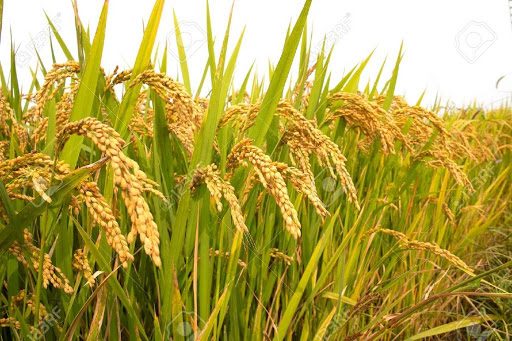Rice production increases despite decline in cultivated area in Nepal

KATHMANDU: Nepal has witnessed an increase in rice production this year despite a reduction in the area under rice cultivation. Timely rainfall, the growing use of improved seeds, and the availability of fertilizers have significantly boosted rice productivity and overall production, according to the Ministry of Agriculture and Livestock Development.
The ministry reported a total rice production of 5,955,476 metric tons for the current fiscal year, an increase of 231,242 metric tons (4.04%) compared to the 5,724,234 metric tons produced in the fiscal year 2080/81 BS. Ministry spokesperson Matina Joshi Vaidya attributed the rise in production to increased productivity, supported by favorable weather conditions, the use of advanced seeds, and better fertilizer availability.
In the fiscal year 2081/82 BS, rice was cultivated on 1,420,636 hectares of land, a slight decrease from 1,438,989 hectares in the previous fiscal year. However, the productivity per hectare rose from 3.98 metric tons last year to 4.19 metric tons this year. Despite this improvement, Nepal still faces a rice deficit of 800,000 metric tons annually, down from a 1 million metric ton shortfall last year, according to senior ministry statistician Ram Krishna Regmi.
Regional Rice Production Trends
– Koshi Province: Cultivation area, production, and productivity have increased. This year, 329,212 hectares of land yielded 1,466,518 metric tons of rice, compared to 324,401 hectares producing 1,435,678 metric tons last year. Productivity improved from 4.43 metric tons per hectare to 4.45 metric tons per hectare.
– Madhesh Province: Cultivation area decreased from 383,183 hectares last year to 374,117 hectares this year, but production rose from 1,337,672 metric tons to 1,480,830 metric tons. Productivity also increased from 3.49 metric tons per hectare to 3.96 metric tons.
– Bagmati Province: Both cultivation area and production dropped. Last year, 128,903 hectares produced 504,344 metric tons, while this year, 125,157 hectares produced 498,662 metric tons. However, productivity rose from 3.91 metric tons per hectare to 3.98 metric tons.
– Gandaki Province: The province also saw a decrease in cultivation area and production. This year, 97,959 hectares yielded 379,032 metric tons, compared to 101,923 hectares producing 391,624 metric tons last year. Productivity improved slightly from 3.84 metric tons per hectare to 3.87 metric tons.
– Lumbini Province: While the cultivation area decreased from 302,386 hectares last year to 299,769 hectares this year, production rose from 1,310,829 metric tons to 1,364,031 metric tons. Productivity increased from 4.33 metric tons per hectare to 4.55 metric tons.
– Karnali Province: The region experienced declines in cultivation area, production, and productivity. Last year, 41,904 hectares produced 145,063 metric tons at a productivity rate of 3.46 metric tons per hectare. This year, the cultivation area dropped to 38,763 hectares, yielding 130,191 metric tons at a productivity rate of 3.27 metric tons per hectare.
– Sudurpaschim Province: Despite a reduction in cultivation area from 156,289 hectares last year to 154,660 hectares this year, production rose from 599,124 metric tons to 636,212 metric tons. Productivity improved from 3.83 metric tons per hectare to 4.11 metric tons.
Regmi noted that while Koshi, Madhesh, Lumbini, and Sudurpaschim provinces recorded increases in total production, the remaining three provinces showed negative growth. In Karnali, reduced cultivation in Rukum (West) contributed to the overall decline. Additionally, issues like unfilled rice panicles in Nawalparasi (East) and changes in cultivation area in Lamjung affected production.
The ministry emphasized the importance of addressing these challenges to ensure consistent growth in rice production across all provinces.














Facebook Comment